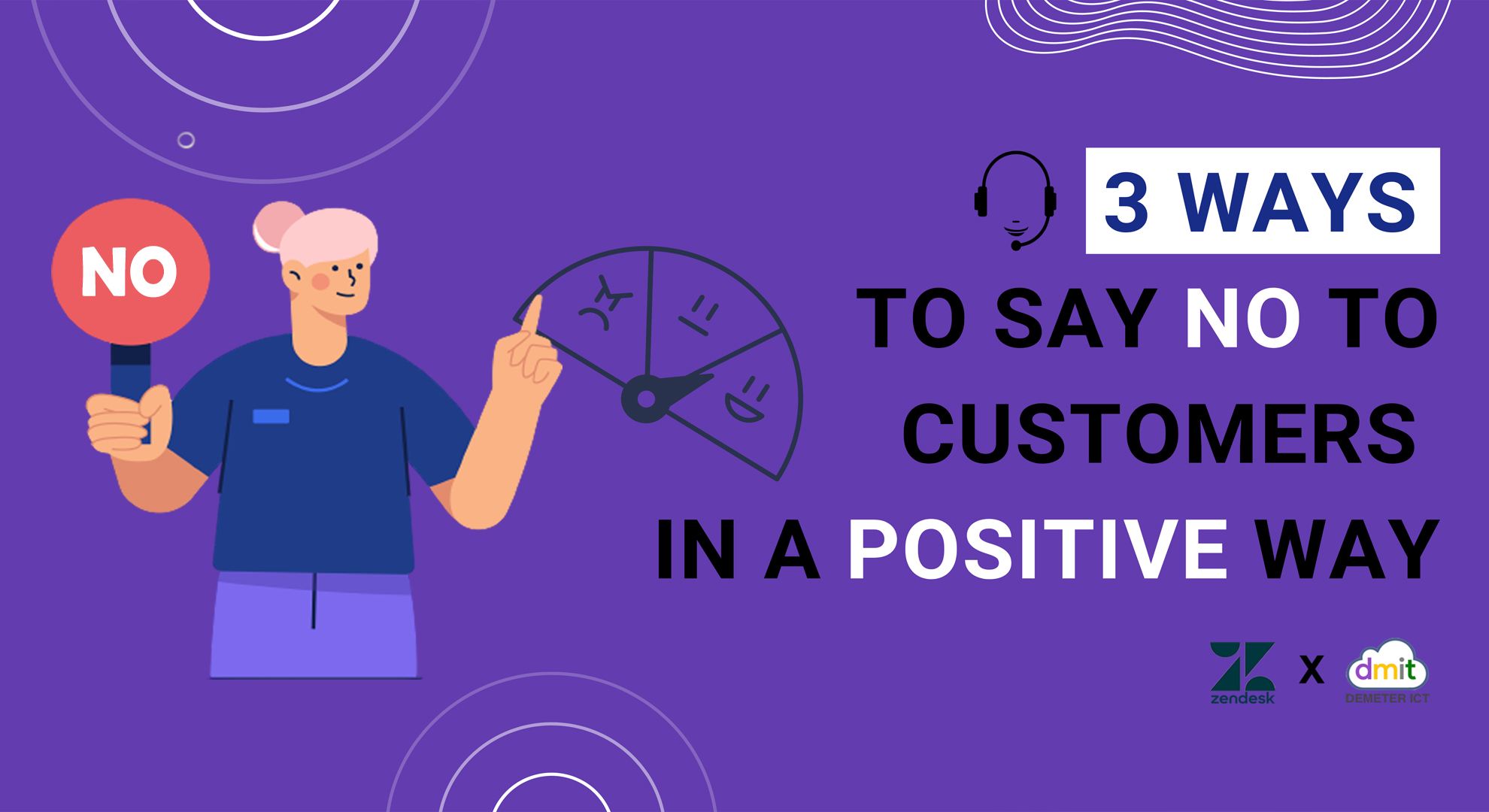3 ways to say no to customers in a positive way
If you’re wondering how to say no to a customer without causing a stir, you’re not alone. Saying no is a lot more fraught than it used to be. In the past, when you couldn’t meet a customer’s demands, you might face anger or irritation and feel stressed out. Facing verbally or physically abusive customers was rare.
While bad customer behavior is on the rise, most consumers still accept that they can’t get their way all the time. It’s more important than ever for customer service representatives to know how to say no in a way that leaves consumers feeling heard and valued. So, here are some tips for how to say no to a customer while still being kind and respectful.
One of the most effective ways to protect and grow customer relationships? Listen. When people feel heard, they’re far more likely to handle being told no better. And they will be less likely to end a relationship.

1) Ally with customers
Even if a customer request can’t be granted, the customer’s level of satisfaction will be much higher if the support agent becomes an ally, offering an alternative solution.
For example, imagine you’re an agent working for an airline, and you’re helping a customer who missed a flight and requested a refund. Although the request isn’t covered by company policy and you’ll have to say no, you can frame it so the customer understands that you’re trying to help them despite declining the request. You can say something along the lines of:
“I’m so sorry your family emergency caused you to miss your flight. We can’t refund you for the flight you missed, but let’s see if we can rebook you on a different flight.” This starts off with expressing empathy and ends with a promise of help, softening the news the customer won’t like.
However, company policy plays an outsized role here. Companies must empower their agents to provide excellent customer service and preserve relationships. While it’s unlikely that an airline will budge on ticket refunds, most companies can focus on practices rather than policies. Doing so gives agents much-needed flexibility to come up with creative solutions.
When customers get the sense that a representative is rolling up their sleeves and looking for ways to help—instead of just being a gatekeeper for the company—it can make accepting no for an answer just a bit easier.
2) Empathize
This goes hand-in-hand with being an ally for a customer. Most people understand that the person on the phone isn’t the one making the rules. But they may feel angry or upset because they’re having a problem they can’t solve, which can short-circuit their ability to empathize with you.
That’s why it’s so important for customer service reps to practice empathy for consumers, even when it’s hard. It can help de-escalate anger and remind the customer that the rep is human, too.
Here are some helpful phrases you can use to convey empathy:

Simple phrases like that communicate something essential: I hear you and care about your problem. That said, customers aren’t fools—they’ll smell insincerity a mile away. Really put yourself in their shoes. If you can’t do that, you’ll struggle to tell a customer no in a way that benefits both the customer and the business.
3) There are times when it’s appropriate to say no to a customer
Listening, being a customer ally, empathizing—those are all good tactics for saying no to a customer with respect and kindness. But that doesn’t mean you have to accept any and all behavior from customers.
There’s a difference between an angry or difficult customer and an abusive or rude customer. In the United States, the House of Representatives passed a bill protecting healthcare workers from rising abuse in the workplace (as of this writing, it remains with the Senate). In Scotland, after abuses of retail staff rose from around 400 a year to over 450 per day, the country passed a new law that makes the abuse of frontline workers a specific offense.
No customer support representative should have to deal with an abusive customer. The minute a customer begins yelling, uttering discriminatory remarks, or showing otherwise antisocial behavior, that should be the end of the encounter and the end of the relationship with that customer. While such incidents may be brief, the trauma is real and lasting.
If you manage a customer service team, you’ve probably witnessed reps being targeted by inappropriate behavior. Sometimes the customer isn’t right, and it’s your job to protect your team. Coach your reps in good tactics for saying no to a customer, but be clear that they don’t have to accept abuse.
Tough times require thoughtful solutions for customers
Many people who work in customer service do so because they really enjoy helping people. They would rather help customers find solutions than tell them no. It’s an especially fraught time for customer service reps, given that the world is experiencing an ongoing pandemic that has strained supply chains and tempers. Many customers feel edgy and out of patience, and that has a real impact on the people trying to help.
While we navigate these tough times, it’s extra important that agents find ways to show kindness, be constructive, and exhibit empathy. Doing so can make saying no a little easier—it can also de-escalate difficult interactions and save customer relationships.
Data Source : Zendesk Blog
Demeter ICT – No. 1 Zendesk Premier Partner in Asia Pacific and Great China Region.
For more information, Zendesk product and services, please contact us.
- support@demeterict.com






